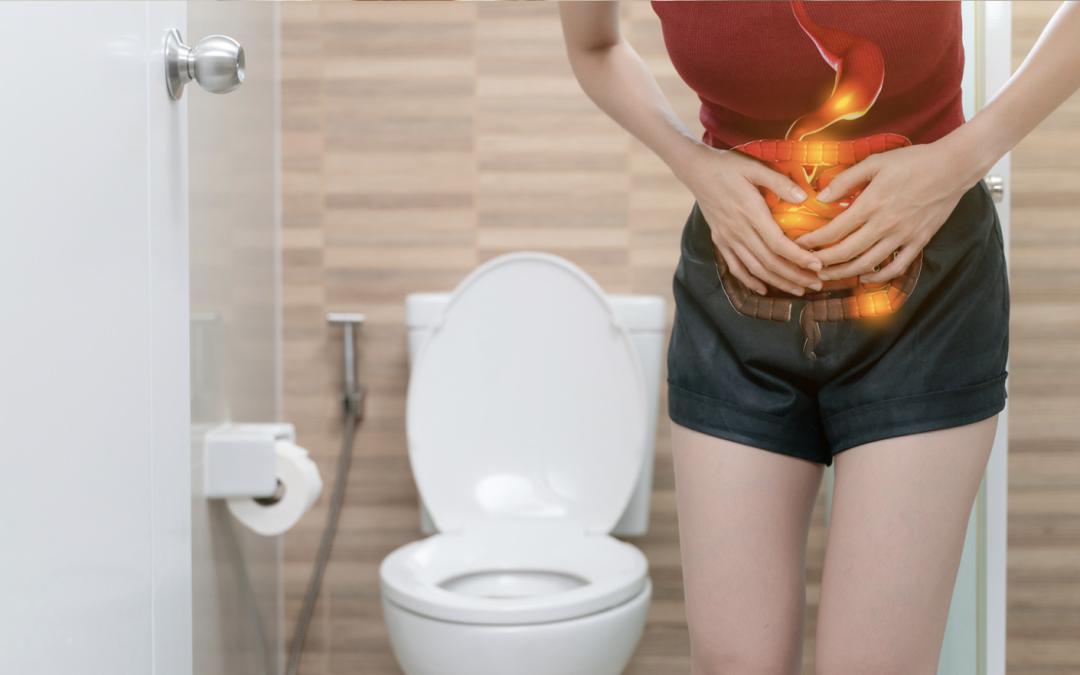What is constipation?
Constipation is defined as reduced frequency or quantity of bowel movements compared with the norm. Normal frequency is estimated at 1 to 3 bowel movements per day.
During constipation, the stool is :
- Less than 3 times a week
- Difficult to evacuate
- Small and tough
- At level 1-2 of the Bristol scale
- Unsatisfactory
What's blocking it? Where does it come from?
Two areas can be targeted: the colon (large intestine) and the anorectal region.
The role of the colon is to reabsorb water and electrolytes escaping from the small intestine. This reabsorption leaves just enough water to form adequate stools. A colon that absorbs too will result in stools with a reduced water content (stool). dry and hard).
The action of expulsion is essential. Voluntary expulsion takes place in the anorectal region and is regulated by physiological aspects (e.g. weight of stool in the rectum), but also by social and cultural elements (e.g. holding back from a bowel movement in public).
Why some people are constipateds ?
Constipation can occur for a number of reasons:
- Insufficient food intake (e.g. fasting or a very low-calorie diet) Obviously, if inputs are limited, it's very difficult to generate excreta.
- Insufficient intake of fiber
- Insufficient water supply
- Certain diseases e.g. hypothyroidism, multiple sclerosis, diabetes, Parkinson's disease
- Certain medications (e.g. opiates and anticholinergics) or supplements (iron, calcium)
- Hypersensitivity and difficulty in expulsion
The majority of cases of chronic constipation have idiopathic causes, i.e.–à–say, without explanation targeted. For example, the’intestin irritable atconstipation in some people (SII-C).
Some solutions to constipation
There are a number of solutions to constipation, and here are some of them:
-
Fibers
-
Hydration
-
«Good fats»
-
Physical activity
-
Toilet routine

Fiber and constipation
For everything to do with fibers, the various recommendations must be personalized.
Reaction to fiber types varies greatly from person to person. So it's best to get personalized advice from a nutritionist !

What about «laxative» fibres?
Have you ever heard of so-called laxative fibres?
Theoretically, these fibers are designed to increase the water content and volume of stools, making them softer and easier to pass. However, contrary to popular belief, laxative fibers (often insoluble fibers) have no interaction with water or water-holding capacity. Rather, it's their effect irritant which stimulates the intestinal mucosa to release water and mucus as a sign of protection.
These fibers «accompany» stools easily and painlessly until they are evacuated regularly. They are therefore bound to the stool and evacuated at the same time.
Examples of «laxative» fibers: wheat bran, dried fruits (dates, prunes), psyllium, legumes, vegetable and fruit peels, nuts and seeds.


References:
- Cronin P, Joyce SA, O'Toole PW, O'Connor EM. Dietary Fibre Modulates the Gut Microbiota. Nutrients. 2021; 13(5):1655. https://doi.org/10.3390/nu13051655
- Guan Z-W, Yu E-Z, Feng Q. Soluble Dietary Fiber, One of the Most Important Nutrients for the Gut Microbiota. Molecules. 2021; 26(22):6802. https://doi.org/10.3390/molecules26226802
- O'Grady, J., Shanahan, F. Dietary Fiber and Gastrointestinal Disease: an Evolving Story.Curr Gastroenterol Rep 20, 59 (2018). https://doi.org/10.1007/s11894-018-0667-0
- O'Grady, John; Shanahan, Fergus. Macronutrients, microbiome and precision nutrition. Current Opinion in Gastroenterology 37(2):p 145-151, March 2021. | DOI: 10.1097/MOG.0000000000000705.
- Poitras P., et al. The digestive system: From basic science to the clinic (third revised and expanded edition). (2020). Les Presses de l'Université de Montréal.
